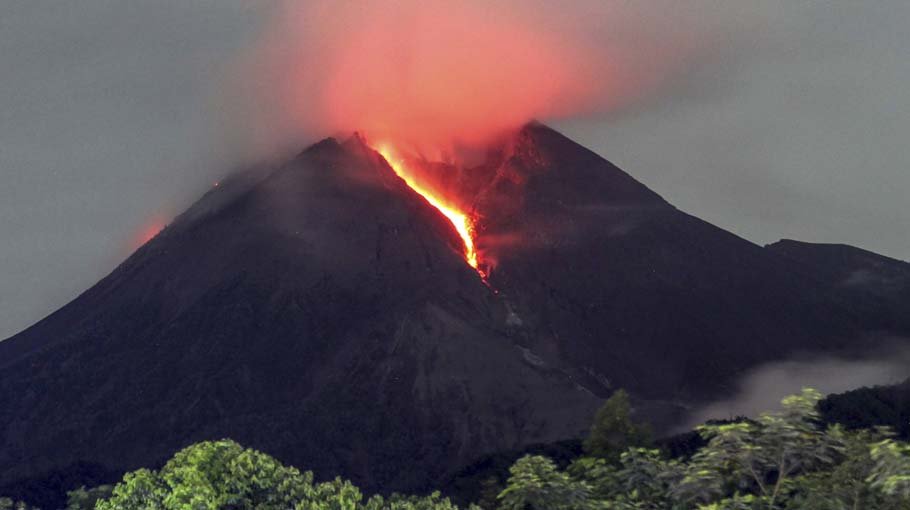Lava flows as Indonesia’s Mount Merapi continues to erupt

Indonesia’s Mount Merapi continued to erupt Friday, forcing authorities to halt tourism and mining activities on the slopes of the country’s most active volcano.
The volcano on the densely populated island of Java unleashed clouds of hot ash shortly before midnight Wednesday into early morning Thursday and fast-moving pyroclastic flows — a mixture of rock, lava and gas — traveled up to 5 kilometers (3.1 miles) down its slopes. It was Mount Merapi’s biggest lava flow since authorities raised its danger level in November 2020, said Hanik Humaida, the head of Yogyakarta’s Volcanology and Geological Hazard Mitigation Center.
Dozens of light eruptions continued during the day Thursday with a river of lava and searing gas clouds flowing 2.5 kilometers (1.5 miles) down its slopes. No casualties were reported. About 253 people were evacuated to temporary shelters but they returned to the volcano’s fertile slopes after the activity subsided, Humaida said.
The volcano eruption on Friday spewed a column of hot clouds rising 100 meters (yards) into the air with avalanches of incandescent lava at least 15 times, according to the Geological Disaster Technology Research and Development Center. Using seismic and other data, the agency estimated the lava spread less then 2 kilometers (1.2 miles) from the crater.
Eko Budi Lelono, who heads Indonesia’s Geology and Volcanology Research Agency, said residents living on Merapi’s slopes were advised to stay 7 kilometers (4.3 miles) away from the crater’s mouth and should be aware of the danger posed by lava.
Read More: Lava flow slows on Spanish island after volcanic eruption
He said the lava dome just below Merapi’s southwest rim and the lava dome in the crater both have been active since last year. The volume was estimated at 1.5 million cubic meters in the southwest rim dome and 3.2 million cubic meters in the crater before partially collapsing in the past two days, sending pyroclastic flows traveling fast down the southwest flank.
“We estimate the potential danger is not more than 7 kilometers,” Humaida said.
Authorities have closed at least five tourism attractions located within the danger zone of 5 kilometers (3.1 miles) from the crater and halted mining activities along the volcano’s rivers, Humaida said. Activities out of the danger zone remained open.
Mount Merapi is the most active of more than 120 active volcanoes in Indonesia and has repeatedly erupted with lava and gas clouds recently. The Volcanology and Geological Hazard Mitigation Center did not raise Merapi’s alert status, which already was at the second-highest of four levels since it began erupting last November.
The 2,968-meter (9,737-foot) peak is near Yogyakarta, an ancient city of several hundred thousand people embedded in a large metro area. The city is also a center of Javanese culture and a seat of royal dynasties going back centuries.
Merapi’s last major eruption in 2010 killed 347 people and caused the evacuation of 20,000 villagers.
Indonesia, an archipelago of 270 million people, is prone to earthquakes and volcanic activity because it sits along the “Ring of Fire,” a horseshoe-shaped series of seismic fault lines around the Pacific Ocean.
Its last major eruption was in December, when Mount Semeru, the highest volcano on Java island, erupted with fury and left 48 people dead and 36 missing in villages that were buried in layers of mud. Several of the injured had serious burns, and the eruption damaged 5,200 houses and buildings.



